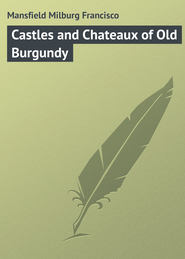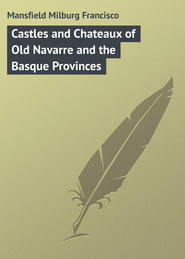По всем вопросам обращайтесь на: info@litportal.ru
(©) 2003-2024.
✖
Dumas' Paris
Настройки чтения
Размер шрифта
Высота строк
Поля
Dumas fils in his play did not idealize Alphonsine Plessis’ character; indeed, Dumas père said that he did not even enlarge or exaggerate any incident – all of which was common property in the demi-monde– “save that he ascribed her death to any cause but the right one.” “I know he made use of it,” said the father, “but he showed the malady aggravated by Duval’s desertion.”
We learn that the elder Dumas “wept like a baby” over the reading of his son’s play. But his tears did not drown his critical faculty. “At the beginning of the third act,” said Dumas père, “I was wondering how Alexandre would get his Marguérite back to town, … but the way Alexandre got out of the difficulty proves that he is my son, every inch of him, and at the very outset of his career he is a better dramatist than I am ever likely to be.”
“Alphonsine Plessis was decidedly a real personage, but not an ordinary one in her walk of life,” said Doctor Véron. “A woman of her refinement might not have been impossible in a former day, because the grisette – and subsequently the femme entretenue– was not then even surmised. She interests me much; she is the best dressed woman in Paris, she neither conceals nor hides her vices, and she does not continually hint about money; in short, she is wonderful.”
“La Dame aux Camélias” appeared within eighteen months of the actual death of the heroine, and went into every one’s hands, interest being whetted meanwhile by the recent event, and yet more by much gossip – scandal if you will – which universally appeared in the Paris press. Her pedigree was evolved and diagnosed by Count G. de Contades in a French bibliographical journal, Le Livre, which showed that she was descended from a “guénuchetonne” (slattern) of Longé, in the canton of Brionze, near Alençon; a predilection which the elder Dumas himself had previously put forth when he stated that, “I am certain that one might find taint either on the father’s side, or on the mother’s, probably on the former’s, but more probably still on both.”
The following eulogy, extracted from a letter written to Dumas fils by Victor Hugo upon the occasion of the inhumation of the ashes of Alexandre Dumas at Villers-Cotterets, whither they were removed from Puits, shows plainly the esteem in which his literary abilities were held by the more sober-minded of his compeers:
“Mon cher Confrère: – I learn from the papers of the funeral of Alexandre Dumas at Villers-Cotterets… It is with regret that I am unable to attend… But I am with you in my heart… What I would say, let me write… No popularity of the past century has equalled that of Alexandre Dumas. His successes were more than successes: they were triumphs… The name of Alexandre Dumas is more than ‘Français, il est Européen;’ and it is more than European, it is universal. His theatre has been given publicity in all lands, and his romances have been translated into all tongues. Alexandre Dumas was one of those men we can call the sowers of civilization… Alexandre Dumas is seducing, fascinating, interesting, amusing, and informing… All the emotions, the most pathetic, all the irony, all the comedy, all the analysis of romance, and all the intuition of history are found in the supreme works constructed by this great and vigorous architect.
“… His spirit was capable of all the miracles he performed; this he bequeathed and this survives… Your renown but continues his glory.
“… Your father and I were young together… He was a grand and good friend… I had not seen him since 1857… As I entered Paris Alexandre Dumas was leaving. I did not have even a parting shake of the hand.
“The visit which he made me in my exile I will some day return to his tomb.
“Cher confrère, fils de mon ami, je vous embrasse.
“Victor Hugo.”
Of Dumas, Charles Reade said: “He has never been properly appreciated; he is the prince of dramatists, the king of romancists, and the emperor of good fellows.”
Dumas fils he thought a “vinegar-blooded iconoclast – shrewd, clever, audacious, introspective, and mathematically logical.”
The Cimetière du Père La Chaise has a contemporary interest with the names of many who were contemporaries of Dumas in the life and letters of his day.
Of course, sentimental interest first attaches itself to the Gothic canopy – built from the fragments of the convent of Paraclet – which enshrines the remains of Abelard and Heloïse (1142-64), and this perhaps is as it should be, but for those who are conversant with the life of Paris of Dumas’ day, this most “famous resting-place” has far more interest because of its shelter given to so many of Dumas’ contemporaries and friends.
Scribe, who was buried here 1861; Michelet, d. 1874; Delphine Cambacérès, 1867; Lachambeaudie, 1872; Soulie, 1847; Balzac, 1850; Ch. Nodier, 1844; C. Delavigne, 1843; Delacroix, the painter, 1865; Talma, the tragedian, 1826; Boieldieu, the composer, 1834; Chopin, 1849; Herold, 1833; General Foy, 1825; David d’Angers, 1856; Hugo, 1828 (the father of Victor Hugo); David, the painter, 1825; Alfred de Musset, 1857; Rossini, 1868.
CHAPTER V.
THE PARIS OF DUMAS
Dumas’ real descent upon the Paris of letters and art was in 1823, when he had given up his situation in the notary’s office at Crépy, and after the eventful holiday journey of a few weeks before. His own account of this, his fourth entrance into the city, states that he was “landed from the coach at five A. M. in the Rue Bouloi, No. 9. It was Sunday morning, and Bourbon Paris was very gloomy on a Sunday.”
Within a short time of his arrival the young romancer was making calls, of a nature which he hoped would provide him some sort of employment until he should make his way in letters, upon many bearers of famous Bourbon names who lived in the Faubourgs St. Germain and St. Honoré – all friends and compatriots of his father.
He had brought with him letters formerly written to his father, and hoped to use them as a means of introduction. He approached Marshal Jourdain, General Sebastiani, the Duc de Bellune, and others, but it was not until he presented himself to General Foy, at 64 Rue du Mont Blanc, – the deputy for his department, – that anything to his benefit resulted.
Finally, through the kindly aid of General Foy, Dumas – son of a republican general though he was – found himself seated upon a clerk’s stool, quill in hand, writing out dictation at the secretary’s bureau of the Duc d’Orleans.
“I then set about to look for lodgings,” said Dumas, “and, after going up and down many staircases, I came to a halt in a little room on a fourth story, which belonged to that immense pile known as the ‘Pâté des Italiens.’ The room looked out on the courtyard, and I was to have it for one hundred and twenty francs per annum.”
From that time on Dumas may be said to have known Paris intimately – its life, its letters, its hotels and restaurants, its theatres, its salons, and its boulevards.
So well did he know it that he became a part and parcel of it.
His literary affairs and relations are dealt with elsewhere, but the various aspects of the social and economic life of Paris at the time Dumas knew its very pulse-beats must be gleaned from various contemporary sources.
The real Paris which Dumas knew – the Paris of the Second Empire – exists no more. The order of things changeth in all but the conduct of the stars, and Paris, more than any other centre of activity, scintillates and fluctuates like the changings of the money-markets.
The life that Dumas lived, so far as it has no bearing on his literary labours or the evolving of his characters, is quite another affair from that of his yearly round of work.
He knew intimately all the gay world of Paris, and fresh echoes of the part he played therein are being continually presented to us.
He knew, also, quite as intimately, certain political and social movements which took place around about him, in which he himself had no part.
It was in the fifties of the nineteenth century that Paris first became what one might call a coherent mass. This was before the days of the application of the adjective “Greater” to the areas of municipalities. Since then we have had, of course, a “Greater Paris” as we have a “Greater London” and a “Greater New York,” but at the commencement of the Second Empire (1852) there sprang into being, – “jumped at one’s eyes,” as the French say, – when viewed from the heights of the towers of Notre Dame, an immense panorama, which showed the results of a prodigious development, radiating far into the distance, from the common centre of the Ile de la Cité and the still more ancient Lutèce.
Up to the construction of the present fortifications, – under Louis-Philippe, – Paris had been surrounded, at its outer confines, by a simple octroi barrier of about twenty-five kilometres in circumference, and pierced by fifty-four entrances. Since 1860 this wall has been raised and the limits of what might be called Paris proper have been extended up to the fortified lines.
This fortification wall was thirty-four kilometres in length; was strengthened by ninety-four bastions, and surrounded and supported by thirteen detached forts. Sixty-five openings gave access to the inner city, by which the roadways, waterways, and railways entered. These were further distinguished by classification as follows: portes– of which there were fifty; poternes– of which there were five; and passages– of which there were ten. Nine railways entered the city, and the “Ceinture” or girdle railway, which was to bind the various gares, was already conceived.
At this time, too, the Quais received marked attention and development; trees were planted along the streets which bordered upon them, and a vast system of sewerage was planned which became – and endures until to-day – one of the sights of Paris, for those who take pleasure in such unsavoury amusements.
Lighting by gas was greatly improved, and street-lamps were largely multiplied, with the result that Paris became known for the first time as “La Ville Lumière.”
A score or more of villages, or bourgs, before 1860, were between the limits of these two barriers, but were at that time united by the loi d’annexion, and so “Greater Paris” came into being.
The principle bourgs which lost their identity, which, at the same time is, in a way, yet preserved, were Auteuil, Passy, les Ternes, Batignolles, Montmartre, la Chapelle, la Villette, Belleville, Ménilmontant, Charenton, and Bercy; and thus the population of Paris grew, as in the twinkling of an eye, from twelve hundred thousand to sixteen hundred thousand; and its superficial area from thirty-four hundred hectares to more than eight thousand – a hectare being about the equivalent of two and a half acres.
During the period of the “Restoration,” which extended from the end of the reign of the great Napoleon to the coming of Louis-Philippe (1814-30), Paris may be said to have been in, or at least was at the beginning of, its golden age of prosperity.
In a way the era was somewhat inglorious, but in spite of liberal and commonplace opinion, there was made an earnest effort to again secure the pride of place for French letters and arts; and it was then that the romantic school, with Dumas at its very head, attained its first importance.
It was not, however, until Louis-Philippe came into power that civic improvements made any notable progress, though the Pont des Invalides had been built, and gas-lamps, omnibuses, and sidewalks, had been introduced just previously.
Under Louis-Philippe were completed the Église de la Madeleine and the Arc de Triomphe d’Etoile. The Obelisk, – a gift from Mohammed Ali, Viceroy of Egypt, to Louis-Philippe, – the Colonne de Juillet, and the Ponts Louis-Philippe and du Carrousel were built, as well as the modern fortifications of Paris, with their detached forts of Mont Valerien, Ivry, Charenton, Nogent, etc.
There existed also the encircling boulevards just within the fortifications, and yet another parallel series on the north, beginning at the Madeleine and extending to the Colonne de Juillet.
It was not, however, until the Second Republic and the Second Empire of Napoleon III. that a hitherto unparallelled transformation was undertaken, and there sprung into existence still more broad boulevards and spacious squares, and many palatial civic and private establishments, the Bourse, the New Opera, and several theatres, the Ceinture Railway, and the Bois de Boulogne and the Bois de Vincennes.
By this time Dumas’ activities were so great, or at least the product thereof was so great, that even his intimate knowledge of French life of a more heroic day could not furnish him all the material which he desired.
It was then that he produced those essentially modern stories of life in Paris of that day, which, slight though they are as compared with the longer romances, are best represented by the “Corsican Brothers,” “Captain Pamphile,” and “Gabriel Lambert.”
Among the buildings at this time pulled down, on the Place du Carrousel, preparatory to the termination of the Louvre, was the Hôtel Longueville, the residence of the beautiful duchess of that name, celebrated for her support of the Fronde and her gallantries, as much as for her beauty. Dumas would have revelled in the following incident as the basis of a tale. In the arched roof of one of the cellars of the duchess’ hôtel two skeletons of a very large size and in a perfect state of preservation were discovered, which have since been the object of many discussions on the part of the antiquarians, but adhuc sub judice lis est. Another discovery was made close by the skeletons, which is more interesting from a literary point of view; namely, that of a box, in carved steel, embellished with gilded brass knobs, and containing several papers. Among them was an amatory epistle in verse, from the Prince de Marsillac to the fair duchess. The other papers were letters relating to the state of affairs at that time; some from the hand of the celebrated Turenne, with memorandums, and of the Prince de Conti, “of great value to autograph collectors,” said the newspaper accounts of the time, but assuredly of still more value to historians, or even novelists.
We learn that the elder Dumas “wept like a baby” over the reading of his son’s play. But his tears did not drown his critical faculty. “At the beginning of the third act,” said Dumas père, “I was wondering how Alexandre would get his Marguérite back to town, … but the way Alexandre got out of the difficulty proves that he is my son, every inch of him, and at the very outset of his career he is a better dramatist than I am ever likely to be.”
“Alphonsine Plessis was decidedly a real personage, but not an ordinary one in her walk of life,” said Doctor Véron. “A woman of her refinement might not have been impossible in a former day, because the grisette – and subsequently the femme entretenue– was not then even surmised. She interests me much; she is the best dressed woman in Paris, she neither conceals nor hides her vices, and she does not continually hint about money; in short, she is wonderful.”
“La Dame aux Camélias” appeared within eighteen months of the actual death of the heroine, and went into every one’s hands, interest being whetted meanwhile by the recent event, and yet more by much gossip – scandal if you will – which universally appeared in the Paris press. Her pedigree was evolved and diagnosed by Count G. de Contades in a French bibliographical journal, Le Livre, which showed that she was descended from a “guénuchetonne” (slattern) of Longé, in the canton of Brionze, near Alençon; a predilection which the elder Dumas himself had previously put forth when he stated that, “I am certain that one might find taint either on the father’s side, or on the mother’s, probably on the former’s, but more probably still on both.”
The following eulogy, extracted from a letter written to Dumas fils by Victor Hugo upon the occasion of the inhumation of the ashes of Alexandre Dumas at Villers-Cotterets, whither they were removed from Puits, shows plainly the esteem in which his literary abilities were held by the more sober-minded of his compeers:
“Mon cher Confrère: – I learn from the papers of the funeral of Alexandre Dumas at Villers-Cotterets… It is with regret that I am unable to attend… But I am with you in my heart… What I would say, let me write… No popularity of the past century has equalled that of Alexandre Dumas. His successes were more than successes: they were triumphs… The name of Alexandre Dumas is more than ‘Français, il est Européen;’ and it is more than European, it is universal. His theatre has been given publicity in all lands, and his romances have been translated into all tongues. Alexandre Dumas was one of those men we can call the sowers of civilization… Alexandre Dumas is seducing, fascinating, interesting, amusing, and informing… All the emotions, the most pathetic, all the irony, all the comedy, all the analysis of romance, and all the intuition of history are found in the supreme works constructed by this great and vigorous architect.
“… His spirit was capable of all the miracles he performed; this he bequeathed and this survives… Your renown but continues his glory.
“… Your father and I were young together… He was a grand and good friend… I had not seen him since 1857… As I entered Paris Alexandre Dumas was leaving. I did not have even a parting shake of the hand.
“The visit which he made me in my exile I will some day return to his tomb.
“Cher confrère, fils de mon ami, je vous embrasse.
“Victor Hugo.”
Of Dumas, Charles Reade said: “He has never been properly appreciated; he is the prince of dramatists, the king of romancists, and the emperor of good fellows.”
Dumas fils he thought a “vinegar-blooded iconoclast – shrewd, clever, audacious, introspective, and mathematically logical.”
The Cimetière du Père La Chaise has a contemporary interest with the names of many who were contemporaries of Dumas in the life and letters of his day.
Of course, sentimental interest first attaches itself to the Gothic canopy – built from the fragments of the convent of Paraclet – which enshrines the remains of Abelard and Heloïse (1142-64), and this perhaps is as it should be, but for those who are conversant with the life of Paris of Dumas’ day, this most “famous resting-place” has far more interest because of its shelter given to so many of Dumas’ contemporaries and friends.
Scribe, who was buried here 1861; Michelet, d. 1874; Delphine Cambacérès, 1867; Lachambeaudie, 1872; Soulie, 1847; Balzac, 1850; Ch. Nodier, 1844; C. Delavigne, 1843; Delacroix, the painter, 1865; Talma, the tragedian, 1826; Boieldieu, the composer, 1834; Chopin, 1849; Herold, 1833; General Foy, 1825; David d’Angers, 1856; Hugo, 1828 (the father of Victor Hugo); David, the painter, 1825; Alfred de Musset, 1857; Rossini, 1868.
CHAPTER V.
THE PARIS OF DUMAS
Dumas’ real descent upon the Paris of letters and art was in 1823, when he had given up his situation in the notary’s office at Crépy, and after the eventful holiday journey of a few weeks before. His own account of this, his fourth entrance into the city, states that he was “landed from the coach at five A. M. in the Rue Bouloi, No. 9. It was Sunday morning, and Bourbon Paris was very gloomy on a Sunday.”
Within a short time of his arrival the young romancer was making calls, of a nature which he hoped would provide him some sort of employment until he should make his way in letters, upon many bearers of famous Bourbon names who lived in the Faubourgs St. Germain and St. Honoré – all friends and compatriots of his father.
He had brought with him letters formerly written to his father, and hoped to use them as a means of introduction. He approached Marshal Jourdain, General Sebastiani, the Duc de Bellune, and others, but it was not until he presented himself to General Foy, at 64 Rue du Mont Blanc, – the deputy for his department, – that anything to his benefit resulted.
Finally, through the kindly aid of General Foy, Dumas – son of a republican general though he was – found himself seated upon a clerk’s stool, quill in hand, writing out dictation at the secretary’s bureau of the Duc d’Orleans.
“I then set about to look for lodgings,” said Dumas, “and, after going up and down many staircases, I came to a halt in a little room on a fourth story, which belonged to that immense pile known as the ‘Pâté des Italiens.’ The room looked out on the courtyard, and I was to have it for one hundred and twenty francs per annum.”
From that time on Dumas may be said to have known Paris intimately – its life, its letters, its hotels and restaurants, its theatres, its salons, and its boulevards.
So well did he know it that he became a part and parcel of it.
His literary affairs and relations are dealt with elsewhere, but the various aspects of the social and economic life of Paris at the time Dumas knew its very pulse-beats must be gleaned from various contemporary sources.
The real Paris which Dumas knew – the Paris of the Second Empire – exists no more. The order of things changeth in all but the conduct of the stars, and Paris, more than any other centre of activity, scintillates and fluctuates like the changings of the money-markets.
The life that Dumas lived, so far as it has no bearing on his literary labours or the evolving of his characters, is quite another affair from that of his yearly round of work.
He knew intimately all the gay world of Paris, and fresh echoes of the part he played therein are being continually presented to us.
He knew, also, quite as intimately, certain political and social movements which took place around about him, in which he himself had no part.
It was in the fifties of the nineteenth century that Paris first became what one might call a coherent mass. This was before the days of the application of the adjective “Greater” to the areas of municipalities. Since then we have had, of course, a “Greater Paris” as we have a “Greater London” and a “Greater New York,” but at the commencement of the Second Empire (1852) there sprang into being, – “jumped at one’s eyes,” as the French say, – when viewed from the heights of the towers of Notre Dame, an immense panorama, which showed the results of a prodigious development, radiating far into the distance, from the common centre of the Ile de la Cité and the still more ancient Lutèce.
Up to the construction of the present fortifications, – under Louis-Philippe, – Paris had been surrounded, at its outer confines, by a simple octroi barrier of about twenty-five kilometres in circumference, and pierced by fifty-four entrances. Since 1860 this wall has been raised and the limits of what might be called Paris proper have been extended up to the fortified lines.
This fortification wall was thirty-four kilometres in length; was strengthened by ninety-four bastions, and surrounded and supported by thirteen detached forts. Sixty-five openings gave access to the inner city, by which the roadways, waterways, and railways entered. These were further distinguished by classification as follows: portes– of which there were fifty; poternes– of which there were five; and passages– of which there were ten. Nine railways entered the city, and the “Ceinture” or girdle railway, which was to bind the various gares, was already conceived.
At this time, too, the Quais received marked attention and development; trees were planted along the streets which bordered upon them, and a vast system of sewerage was planned which became – and endures until to-day – one of the sights of Paris, for those who take pleasure in such unsavoury amusements.
Lighting by gas was greatly improved, and street-lamps were largely multiplied, with the result that Paris became known for the first time as “La Ville Lumière.”
A score or more of villages, or bourgs, before 1860, were between the limits of these two barriers, but were at that time united by the loi d’annexion, and so “Greater Paris” came into being.
The principle bourgs which lost their identity, which, at the same time is, in a way, yet preserved, were Auteuil, Passy, les Ternes, Batignolles, Montmartre, la Chapelle, la Villette, Belleville, Ménilmontant, Charenton, and Bercy; and thus the population of Paris grew, as in the twinkling of an eye, from twelve hundred thousand to sixteen hundred thousand; and its superficial area from thirty-four hundred hectares to more than eight thousand – a hectare being about the equivalent of two and a half acres.
During the period of the “Restoration,” which extended from the end of the reign of the great Napoleon to the coming of Louis-Philippe (1814-30), Paris may be said to have been in, or at least was at the beginning of, its golden age of prosperity.
In a way the era was somewhat inglorious, but in spite of liberal and commonplace opinion, there was made an earnest effort to again secure the pride of place for French letters and arts; and it was then that the romantic school, with Dumas at its very head, attained its first importance.
It was not, however, until Louis-Philippe came into power that civic improvements made any notable progress, though the Pont des Invalides had been built, and gas-lamps, omnibuses, and sidewalks, had been introduced just previously.
Under Louis-Philippe were completed the Église de la Madeleine and the Arc de Triomphe d’Etoile. The Obelisk, – a gift from Mohammed Ali, Viceroy of Egypt, to Louis-Philippe, – the Colonne de Juillet, and the Ponts Louis-Philippe and du Carrousel were built, as well as the modern fortifications of Paris, with their detached forts of Mont Valerien, Ivry, Charenton, Nogent, etc.
There existed also the encircling boulevards just within the fortifications, and yet another parallel series on the north, beginning at the Madeleine and extending to the Colonne de Juillet.
It was not, however, until the Second Republic and the Second Empire of Napoleon III. that a hitherto unparallelled transformation was undertaken, and there sprung into existence still more broad boulevards and spacious squares, and many palatial civic and private establishments, the Bourse, the New Opera, and several theatres, the Ceinture Railway, and the Bois de Boulogne and the Bois de Vincennes.
By this time Dumas’ activities were so great, or at least the product thereof was so great, that even his intimate knowledge of French life of a more heroic day could not furnish him all the material which he desired.
It was then that he produced those essentially modern stories of life in Paris of that day, which, slight though they are as compared with the longer romances, are best represented by the “Corsican Brothers,” “Captain Pamphile,” and “Gabriel Lambert.”
Among the buildings at this time pulled down, on the Place du Carrousel, preparatory to the termination of the Louvre, was the Hôtel Longueville, the residence of the beautiful duchess of that name, celebrated for her support of the Fronde and her gallantries, as much as for her beauty. Dumas would have revelled in the following incident as the basis of a tale. In the arched roof of one of the cellars of the duchess’ hôtel two skeletons of a very large size and in a perfect state of preservation were discovered, which have since been the object of many discussions on the part of the antiquarians, but adhuc sub judice lis est. Another discovery was made close by the skeletons, which is more interesting from a literary point of view; namely, that of a box, in carved steel, embellished with gilded brass knobs, and containing several papers. Among them was an amatory epistle in verse, from the Prince de Marsillac to the fair duchess. The other papers were letters relating to the state of affairs at that time; some from the hand of the celebrated Turenne, with memorandums, and of the Prince de Conti, “of great value to autograph collectors,” said the newspaper accounts of the time, but assuredly of still more value to historians, or even novelists.











